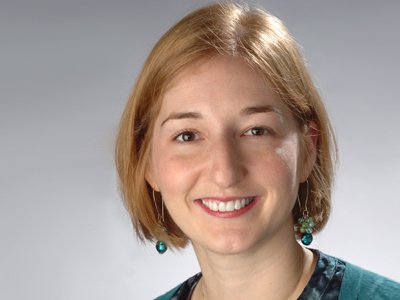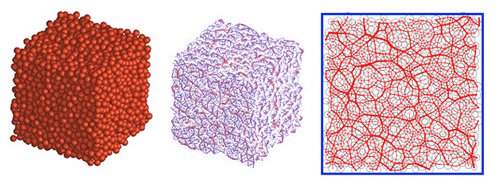Syracuse Physicist Awarded Simons Foundation Collaboration Grant
M. Lisa Manning part of $10 million project exploring glassy solids

A physicist in Syracuse University’s College of Arts and Sciences has been awarded a collaborative grant from the Simons Foundation Mathematics and the Physical Sciences (MPS) division to study the glassy state of matter.
Associate Professor M. Lisa Manning is part of a $10 million multinational collaboration, based at The University of Chicago (UC). One of 13 principal investigators, she will receive $546,000, along with $2.5 million that will be shared with her colleagues to underwrite costs such as computing facilities, conference travel, and postdoctoral fellows.
Manning says the purpose of the research project is to “crack the glass problem”—specifically, to explain the nature of glass, a material with properties that seem to defy classification.

“The endeavor to understand the glassy state of matter forces us to consider the seemingly simple question: What is a solid?” says Manning, an expert in soft matter and biophysics. “In glass, the constituent molecules are all jumbled up like those in a fluid, and, yet, the material, as a whole, still behaves like a solid. We want to understand why.”
Such understanding is important for industrial applications, including the processing of pharmaceuticals and the transport and storage of agricultural products, and is at the core of theoretical statistical physics.
“Glass is a disordered solid stranded far from equilibrium," Manning continues. "It inhabits a very complex energy landscape, and dealing with that complexity requires the invention of a new set of tools and concepts. The same theoretical tools will likely be useful for other complex problems, including some in biology and finance.”
Manning’s group is interested in how glasses form as a material is cooled, and how glasses deform and break under applied stress. Their research will build upon previous discoveries in her group that identify defects in disordered solids and connect sound modes in these solids to mathematical constructs called random matrices.
“Recent discoveries focusing on jamming at zero temperature, the mean-field theory of glasses in infinite dimension, and the dynamics in a marginally stable landscape are converging to give us a deeper understanding of glassy solids,” Manning adds. “We think the field is ripe for a breakthrough that will allow us to develop a unified theory of structure and excitations in glassy matter, as well as a theory for the relaxation dynamics upon approaching the glass transition.”
Renowned for her study of granular materials and glasses, Manning is traveling to Lyon, France, this summer to accept the prestigious Young Scientist Award from the Statistical Physics Commission of the International Union of Pure and Applied Physics. She is the first woman and first American to receive the award.
The Simons collaboration is directed by Sidney R. Nagel, UC’s Stein-Freiler Distinguished Service Professor of Physics. More information is available at scglass.uchicago.edu.
The Simons Foundation’s mission is to advance the frontiers of research in mathematics and the basic sciences. The MPS division supports research in mathematics, theoretical physics, and theoretical computer science.
